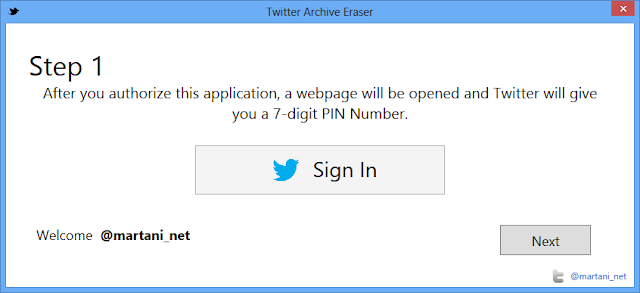
Digital marketing describes how to target specific audiences. This industry has existed since the 1990s when Tim Berners-Lee, a computer scientist, created the World Wide Web. Search engines were born. It has become the most common way to reach consumers worldwide and locally. Before you attempt to implement this type of marketing for your business, it is important that you are familiar with the basics. Below are the essential elements of a digital strategy.
Inbound marketing
Inbound Marketing is digital advertising that targets customers actively searching for products or services. Inbound marketing allows potential customers to find you business via search engines, email subscriptions and word-of mouth. Instead of wasting money on advertising, make content that your ideal client will love to read and use. Start with a blog that offers advice from other users and work your way backwards.
To engage with customers and to establish relationships, you could also host live events. You can host Q&A or product tutorials at these events. You can also host live events on social media platforms like Instagram Live and Facebook Live. To keep customers satisfied, you must provide exceptional customer service. This will help you establish a positive brand reputation that will attract more customers.
Inbound marketing can be one of the most powerful forms digital marketing. It helps build trust and credibility with customers, and is more effective than conventional advertising methods. It is different from other forms of advertising in that it shows genuine concern and concern for customers. It can also last longer and costs less. This is especially true for digital marketing, where mass marketing can be not only inefficient but also dangerous. Inbound marketing is a great way to increase your return-on-investment.
Inbound Marketing is customer-oriented. You must create content that appeals to your target audience. Inbound marketing is different from traditional marketing, which focuses on spreading word about a company. Instead of focusing on the business itself, it aims to provide useful information for its readers. It offers them information and then follows up by direct advertising. Inbound Marketing will help you establish lasting relationships and ultimately lead to sales or profits by providing valuable content for your target audience.
Outbound marketing
Outbound marketing is a form of advertising that aims to build brand awareness and reach out to new customers. This type marketing is proactive and focuses on contacting prospects rather than waiting for customers to approach you. While it is difficult to measure the effectiveness of outbound marketing, it can still be an effective way to create brand awareness. Outbound marketing is a combination of inbound and outbound marketing.
Outbound marketing refers any marketing form that is not created by the company. This marketing pushes the company on its customers, regardless of whether or not they are interested. Outbound marketing can be done in telemarketing and print and radio ads as well as billboards and pop-ups. This type marketing is less effective because people have become so comfortable with it.
Outbound Marketing is about attracting potential clients by providing relevant information. It's different from inbound marketing, which involves sending a message to a targeted audience. Outbound marketing is more expensive to acquire because it targets customers and draws them to a website. Outbound marketing generates more leads for businesses and more sales. Outbound marketing is also easier to target right prospects.
Outbound marketing is targeted and untargeted. It is the act of attracting leads and turning them into customers using targeted keywords. The target audience determines the difference between both types of marketing. Inbound marketing encourages visitors and guides them through the buyer's journey. Because people want to engage with your content, it allows marketers to qualify leads. Outbound marketing is still highly effective.
Content creation

A good content creation strategy is essential to the success of digital marketing campaigns. Poorly written websites with insufficient content will make your customers feel disinterested. Poor quality content also impacts your business ratings and can damage your reputation. You can ensure that your site offers valuable information to your customers by having a good content strategy. Here are some tips that will help you get your content to the desired results. Once you've finished the checklist, content creation can be an asset to your business.
Identify your audience and what they need. Social media is an effective tool for content marketing strategies. Social networks like Facebook, Twitter, and Instagram have enormous user bases. It's important to target these platforms because you'll drive more traffic to your website and improve your conversion rate. This will make it easy for consumers to share your content through their social media accounts. Make sure your content is persuasive. Content creation strategies for blogs and websites must consider these aspects.
Do your research on the competition. Knowing how your competition approaches content creation can help differentiate your brand voice, fill gaps in your content strategy, increase the visibility of your content, and make it more memorable to customers. If your competitor publishes a YouTube video, include the video content on your YouTube channel in your PPC campaign. Video sharing on YouTube can increase the number and quality of leads that your video receives.
Make content that crackles or snaps. Content that engages the reader can connect with them through story, emotional triggers, rewards, and purpose. Content creation is influenced by word choice. You can make your content unreadable or use the wrong phrases. However, choosing words with positive results will increase your traffic. Writing content that is engaging and interesting will become a breeze if you have the right skills. You can combine all these aspects to make the best content.
Analytics
Product managers used to make decisions based on past experience and intuition. Their data collection methods were limited to past performance analysis, which only provides a partial view into customer preferences. Instead, product managers conducted direct surveys of customers and collected their feedback and comments. These data streams need to be combined to get comprehensive insights, and to improve customer experience. Ultimately, a good analytics platform should help business owners identify the best strategy for their brand.
Identifying the right metrics for your digital marketing strategy is the key to effective analytics. You can automate the process by using tools. To understand how marketing strategies have affected sales, it is essential to collect data. Start small and keep track of the progress of digital marketing campaigns. This will help you get the most out your data. It is important that your analytics be linked to your ROI. Do not allow vanity metrics to distract from your business goals.
Analytics data from web is invaluable for digital marketing. Nearly all channels can lead users to a site. Digital metrics on your website track visitor behavior and can influence design and copywriting. This information can be used by digital marketing analytics specialists to understand how visitors respond. Web analytics can track page loading times and influence conversion rates. With this data you can make informed decisions about how best to improve your digital marketing campaigns.
Digital marketing analytics will help you optimize marketing spend and determine the most effective ways of improving the results of your campaigns. You can determine which traffic sources are most effective, and design marketing strategies that maximize these opportunities. Segmenting traffic based on source is a great method to identify which traffic sources convert. Then you can target your audience through the top five channels. This will enable you to tailor your marketing efforts towards specific target audiences and maximize your profits.
PPC ads

PPC ads can be described as digital marketing. It has many components. Retargeting and remarketing are two of the many components of digital marketing. Your ads should be engaging and communicate a compelling value proposition. The ad headline needs to be persuasive, and it should contain an actionable call-to-action. Depending on your choice of PPC method, you may need to test various ad formats.
PPC advertisements will be most effective if you convert. By tracking clicks, impressions, conversion rates, and clicks you can easily analyze your performance. You can also examine other important metrics, such as attribution, which provides insight into the customer journey. PPC campaigns should aim to convert as much as possible. Make sure you optimize every aspect of your ads. Ask probing questions to your ad groups in order to find out what works. Also, you should check your ads for grammar and broken links.
PPC is a major business in digital marketing. Alphabet's ad platform revenue is $162 billion per year. Various ad formats exist, but Google Ads is the most popular. Most businesses start with Google Ads. Google Ads is a widely-used program that offers many options and flexibility. PPC ads are one of the best ways to advertise online. Targeting users can be done based on search patterns or products.
Shopping campaigns are another type PPC ads. These ads are displayed in the SERP and highlight products in detail. They provide information that will help potential customers make a decision before they visit the store. To create shopping ads, you will need a product feed. This data feed can be uploaded to your Merchant Center. This account should be linked with your PPC campaign. Shopping ads can be an excellent way to drive high quality traffic. Before you decide on a format, make sure to test them all.
FAQ
What is On Page SEO?
On-page seo refers the actions that you take on your website to increase its rank in search engines. On-page SEO covers site architecture, page title, meta tags, image alt text and other aspects. Off-page optimization refers to any activities outside of your website that can improve its ranking. These activities can include backlinks as well as social media shares and press releases.
How often should SEO be performed?
If you maintain your links correctly, you don't necessarily need to update or perform SEO campaigns regularly. You could lose business if your links aren't maintained and you rely only on organic traffic.
Small businesses are advised to have their SEO updated monthly. A quarterly update may be necessary for larger companies.
Why SEO strategy is essential?
The main goal of search engine optimization (SEO) is to increase traffic to your site by getting as many people as possible to find you when they use Google.
Search engines like Google and Yahoo! store information about websites in servers called crawlers. They send this data back from the company's central databases. This allows them to index pages for searching purposes.
If your website appears high in the results, more people will click on your link and visit your page. If you're not visible in these searches, your website won't be found.
To ensure that your website is found by search engines, ranking high on all major search engines is the best method. There are two main methods to achieve this: paid advertising or natural organic links.
Paid Advertisement - This is where companies pay per-click online ads that appear above other sites when searching for information. These ads include banner ads (text ads), pop-ups, widgets for e-commerce, and others.
Natural Organic Links- These links are ones where you have developed a site that is excellent over time and has earned the trust of others in your industry. Blogs, guest blogging, commenting and linking are all ways to build links.
You need to continue investing in both marketing forms in order to be competitive.
How do I create an SEO Strategy?
An effective SEO strategy starts with understanding your goals and how to get there. This will allow you to organize your content around these goals.
The second step in the process is to work on your keywords. Keyword research will give you insight into what people search for when they use specific words. You can then create articles on these topics by using this information.
After writing your articles ensure that you include your target keywords in them. You should also optimize each article by including relevant images and videos. Link to related pages whenever you can.
Now it's time for you to optimize the content that you have written.
Statistics
- These guides are designed and coded 100% from scratch using WordPress. (backlinko.com)
- Sean isn't alone… Blogger James Pearson recently axed hundreds of blog posts from his site… and his organic traffic increased by 30%: (backlinko.com)
- A 62.60% organic traffic boost to that page: (backlinko.com)
- : You might have read about the time that I used The Content Relaunch to boost my organic traffic by 260.7%: (backlinko.com)
- 64% of marketers actively create SEO campaigns because they help hit multiple key performance indicators (KPIs), including increasing traffic, helping your site rank for relevant keywords, improving your conversion rate, and much more. (semrush.com)
External Links
How To
How to choose the best SEO strategy for your company
The following factors can help you determine the best SEO strategy for your website.
-
Keyword Research
Your primary goal with SEO is to rank highly for specific terms.To achieve this, you must research target keywords related to your site. You should also identify negative keyword phrases that don't relate to your audience.
-
Content Strategy
Content marketing is important for all businesses. But eCommerce sites need to ensure their products and services rank high on search results pages. This increases sales and improves conversion rates.
Creating relevant, engaging content that solves problems and provides solutions is key.
-
Link Building
Links have a huge impact on your website's ranking in search engines. Therefore, it is essential to establish valuable relationships between other websites.
-
Social Media Marketing
Using social media channels to promote your business is a smart move. You can encourage others to share your material by sharing content across these platforms.
-
Website Structure
While it's true that good design doesn't necessarily contribute to better rankings, it does have an impact. A clean, simple layout improves user experience, which leads to increased conversions. You must also ensure that your website loads quickly to avoid users leaving before they complete transactions.
-
Mobile Optimization
Mobile devices account for almost half of internet usage today.If your website isn't optimized for mobile, you could lose out on traffic and potential clients.
-
Local Search
This means that your website is optimized for local searches, such "restaurants near my" or "businesses close to me". It's easier to rank well locally because people trust recommendations from friends, family members, and colleagues.
-
Ecommerce Website Development
Ecommerce websites benefit from a range of different types of SEO strategies.For example, they often perform best when they're optimized for both desktop and mobile devices. You can rank higher for longer tail keywords.
-
Video Ranking
Video content is highly ranked on search engines. It ranks well for longer queries and gets more shares.
-
Branding
Branding is the process of designing a logo, product names, and messaging that gives your company its own identity and personality. This allows customers to understand you and your business.
-
Analytics Software
Analytics software allows you to track how visitors interact with your website.The information gathered through analytics can help optimize your efforts and increase conversions.
-
Email List Management
Email lists allow you to send emails directly to your target audience.You can send messages about new products, special offers, and promotions.
-
Blogging
Blogging is another way to generate quality backlinks. When you create blog posts that are related to your business, you will attract backlinks from reliable sources.
-
Customer Satisfaction
Customer satisfaction is one of the most effective ways to get high-quality backlinks.When satisfied customers refer their friends and colleagues to your site, this will result in quality backlinks.
-
Content Marketing
Content marketing involves producing unique, useful, relevant content that educates, entertains, or inspires readers.
Engaging content builds trust and leads to higher conversion rates.